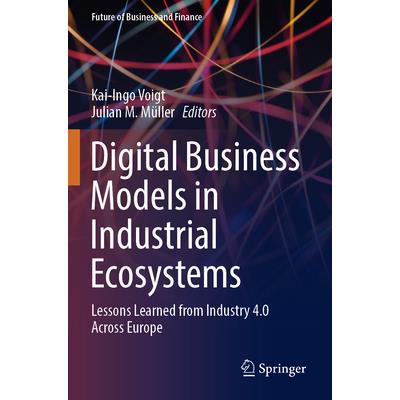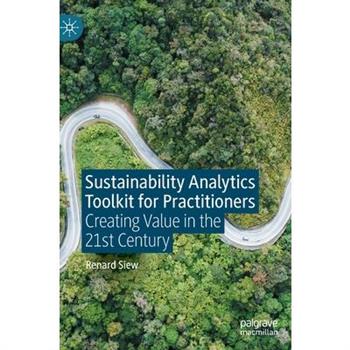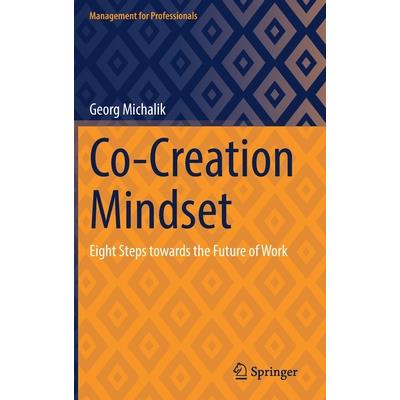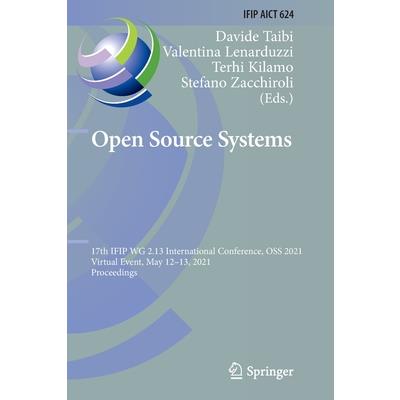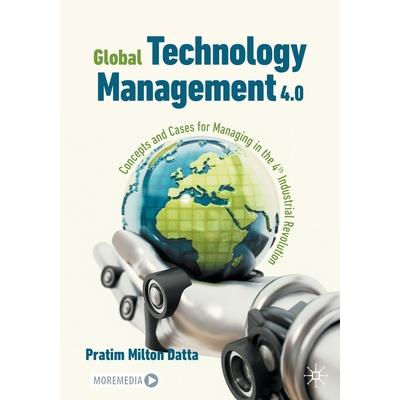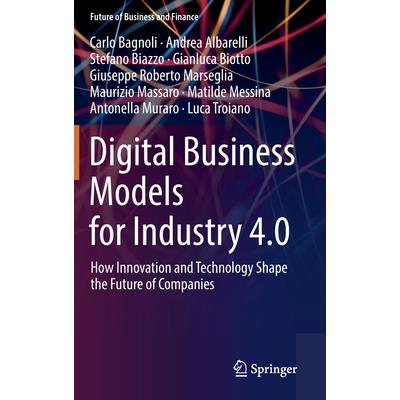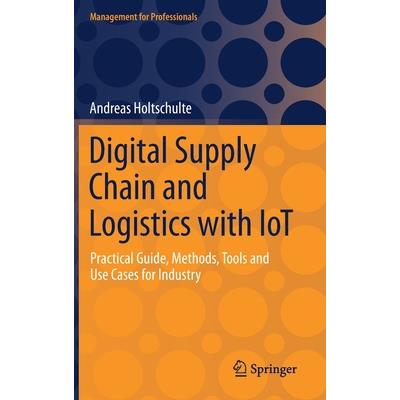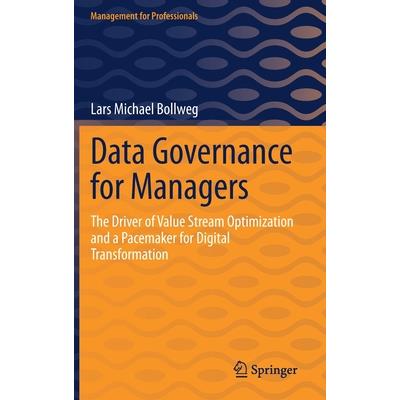The Management of Continuous Product Development
Chapter 1 Introduction.- Chapter 2 Literature Review.- Chapter 3 Research Design and Analysis Method.- Chapter 4 Overview of the Chinese Game Industry and Online Game Development.- -Chapter 5 Quantitative Analysis of Continuous Product Development.- Chapter 6 Management of flexibility in continuous product development.- Chapter 7 Management of exhaustion in continuous product development.- Chapter 8 The impact of user interactions on freemium game performance.- Chapter 9 Conclusion
Contemporary Logistics in China
This book encompasses the macro-factors pertaining to the overall development in logistics technologies and facilities, region-specific policies and plans, industry-wide transformation in transport, manufacturing, commerce, and agriculture in China. Specifically, it describes policies and practices in China's high-quality development of logistics, China's business environment construction in logistics, and progress of port logistics in China. It also highlights the applications and prospects of blockchain technology in China's logistics industry in the year 2019. The expositions on and analyses of these subjects are based on the latest available sources and statistical data. As with the previous volumes, the ultimate aim of this book is to present a timely portrait of the rapid growth of China's logistics market and the status quo of its logistics industry. In so doing, the book offers an in-depth analysis of critical issues involved in the ongoing dynamic and multi-faceted development and provides a valuable reference resource for interested readers in the academic and professional fields.
Organizational Models for Industry 4.0
This book draws on a neo-institutional theory to characterize service-oriented manufacturing firms in relation to more familiar organizational forms, such as lean and agile. It sheds light on whether being lean is a prerequisite for agile organizations and whether agile organizations are precursors of service-oriented organizations. The book empirically examines the prevalence of such organizations using representative samples of manufacturing firms in an industrialized country. This approach makes it possible to "zoom in" and determine whether the extent of adoption of digital manufacturing innovations, digital services, and service-oriented business models varies with organizations' size, industry, product complexity, lot size, type of design process, and type of manufacturing process. In turn, it shows which digital manufacturing innovations, lean practices, and services contribute to leanness-related performance capabilities like quality and costs; agility-related capabilities like fast delivery, flexibility and innovation; and service-oriented capabilities like high service performance and digitalization. In addition, it explores the question of whether lean, agile, and service-oriented performance capabilities contribute to financial performance separately or jointly.
Digital Business Models in Industrial Ecosystems
In recent years, digital business models have frequently been the subject of academic and practical discourse. The increasing interconnectivity across the entire supply chain, which is subsumed under the term Industry 4.0, can unlock even farther-reaching potentials for digital business models, affecting entire supply chains and ecosystems. This book examines the specific challenges and obstacles that supply chain and ecosystem management poses with regard to the development of digital business models. The top-quality contributions gathered here focus on the successful implementation of Industry 4.0 in digital business models for industrial organizations in a European context, making the book a valuable asset for researchers and practitioners alike.
Mathematical Modelling of Decision Problems
This book is intended as a guide to and manual on modeling complex problems in Multi Criteria Decision Making (MCDM). It encourages practitioners to consider the practicalities of real-world scenarios when modeling, while at the same time providing tips and examples of how to incorporate these realities into the initial decision matrix. The goal is to help readers build a decision matrix that replicates reality as closely as possible. Once this matrix has been constructed, the Decision Maker (DM) can select from more than a hundred MCDM methods the one that best fits the requirements and conditions of the matrix. The book features cases taken from real-world scenarios, which deal with various fields, aspects, and characteristics, and are solved using the SIMUS (Sequential Interactive Modeling for Urban Systems) method. This book is a valuable tool for practitioners, researchers and students dealing with MCDM problems.
Sustainability Analytics Toolkit for Practitioners
This book solicits meaningful contributions from key experts and practitioners that have been dealing with the emerging area of sustainability analytics. In doing so, readers would understand the cost, impact and performance of their sustainability initiatives. The book covers current analytical tools (eg: frameworks, standards, ESG indexes) to measure sustainability, and how these tools embed the Sustainable Development Goals (SDGs). In addition to that, a part of the book is also dedicated to the application of sustainability analytics, highlighting key challenges as well as the importance of engagement and communication in shaping the future direction of sustainability assessments. This book will be extremely useful to both researchers and practitioners who are looking for best--in-class practices to create value from their sustainability initiatives.
Kaizen and Business
Do you want to know kaizen and business? Your customers will never stop buying this amazing guide! If so, keep reading! This book is the essential handbook for a changing world. You'll learn how to think outside the suggestion box, remove mental blindfolds, manage stress with one-minute exercises, and handle rising healthcare costs. You'll discover the "small step" secrets for dealing with people, from tough bosses and listless workers to stubborn clients and fussy customers. Inside this book you will find: - My advice for using kaizen in your work- Understand kaizen's benefits- All about ikigai- How to instill kaizen changes And much more!Just buy NOW this book and let your customers know everything about kaizen and business, they will not stop buying this guide!
Co-Creation Mindset
Introduction; Co-Creation; The Basic Assumptions of Co-Creation; The Potentialum Organizational Model; Structure of the Potentialum Model; Structure of the Potentialum Model; The Co-Creation Process; The 8 Steps of the Co-Creation Process; Transformation of the Organization; Co-Creation: The Role of Leadership and HR; Co-Creation and Organizational Development; The Co-Creation Coach and Process Facilitator; Summary; Epilogue: Caught in the Dilemma
Supply Network Dynamics and Control
This book provides a comprehensive overview of recent developments in network dynamics and control with applications to supply chains, manufacturing and logistics systems. It systemizes these developments in the form of new taxonomies and methodological principles to shape the research domain of supply network dynamics control. Uniquely, the book links the fundamentals of control and system theories and artificial intelligence with supply chain and operations management. It addresses the needs of researchers and practitioners alike, revealing the challenges and opportunities of supply chain and operations management by means of dynamic system analysis.
Contemporary Logistics in China
This book provides interpretation of China's logistics development in a new development paradigm and the rural logistics construction under the Rural Revitalization Strategy. Subjects covered in this book encompass the macro-factors pertaining to the overall development in logistics technologies and facilities, region-specific policies and plans, industry-wide transformation in transport, manufacturing, commerce and agriculture. Specifically, this book highlights the impact of COVID-19 on China's logistics industry, and demonstrates the efforts and contributions of China's logistics in the fight against COVID-19 in 2020. Aligns with the previous volumes, the ultimate aim of this book is to present a timely portrait of the rapid growth of China's logistics market and the status quo of its logistics industry. In so doing, the book offers an in-depth analysis of critical issues involved in the ongoing dynamic and multi-faceted development and provides a valuable reference resource for interested readers in the academic and professional fields.
Global Manufacturing Management
Using site-specific optimization approaches in international manufacturing networks is increasingly proving insufficient. To solve this problem, several holistic and integrated alternatives have been developed to reflect a global perspective. This book presents advances in the St. Gallen Global Manufacturing Network Model and its application in numerous industry-, benchmarking- and research projects. The contents combine data-driven solutions with qualitative management frameworks for the strategic optimization of international manufacturing networks.In the first part, the book addresses the foundation of manufacturing network management and further describes the St. Gallen Operational Excellence approaches to manage plant performance. On this basis, the authors show how plant- and network-level performance can be enhanced via key improvement domains (e.g., strategy, configuration, coordination, performance management, digitalization). In turn, the second part demonstrates the application of the constructs in manufacturing companies from various industries. By combining research and practice, the book offers unique perspectives on the management of global production striving toward higher performance on manufacturing site and network level.
Introduction to Internet of Things in Management Science and Operations Research
This book aims to provide relevant theoretical frameworks and the latest empirical research findings in Internet of Things (IoT) in Management Science and Operations Research. It starts with basic concept and present cases, applications, theory, and potential future. The contributed chapters to the book cover wide array of topics as space permits. Examples are from smart industry; city; transportation; home and smart devices. They present future applications, trends, and potential future of this new discipline. Specifically, this book provides an interface between the main disciplines of engineering/technology and the organizational, administrative, and planning capabilities of managing IoT. This book deals with the implementation of latest IoT research findings in practice at the global economy level, at networks and organizations, at teams and work groups and, finally, IoT at the level of players in the networked environments. This book is intended for professionals in the field of engineering, information science, mathematics, economics, and researchers who wish to develop new skills in IoT, or who employ the IoT discipline as part of their work. It will improve their understanding of the strategic role of IoT at various levels of the information and knowledge organization. The book is complemented by a second volume of the same editors with practical cases.
Small talk course for (prospective) networkers
In this volume, the successful Daniel Kern presents some simple steps that anyone can learn how to approach other people and to have a conversation Whether you want to expand your circle of friends, look for your life partner, want to get to know new people on a network meeting or look for candidates in network marketing for your downline - this course will show you the way to more successful communication.
Air Cargo
This book uses numerous examples to describe the current opportunities and risks of air freight against the backdrop of stagnating transport volumes since the financial crisis in 2008. It shows what impact these developments have had on those involved, in particular shippers, airlines, airports and freight forwarders. The application-oriented presentation also provides an insight into the design of complex supply chains and the areas of tension in which the players in air freight operate.
Underneath It All
Today's executives have much higher expectations of assistants than in the past. Many executives want their assistants to learn, understand, and especially "know" the business. Administrative/executive assistants will need an entirely new set of skills, such as a commitment to quality performance, cognitive thinking, and management of organizational goals. Joan Burge, author of this cutting-edge book, spotlights the true value that administrative professionals have in terms of their relationship with their principals, their organizations, and the companies for which they work.You'll read why it's essential to maintain your competitive advantage and how continual improvement makes it possible. You will explore key points with Joan that lead to success and will likely wonder who switched on the lights.Once you "see" what is underneath it all, you will become a more effective person-in your personal life as well as in your business life. Burge truly speaks from experience when she shares her philosophies and her stories because she has been an executive assistant herself. As a corporate trainer, speaker, consultant, and CEO of her own company, she brings a wealth of knowledge from both sides of the desk.Underneath It All presents new ideas and ambitious ways to approach the challenge of rising to the top in a field that is exciting and rewarding. This book is a valuable investment in your future.
Beautiful Pictures
Economists have long insisted the market is "efficient" and "random," with little to no relationship between one move and the next. This view suggests we can learn nothing from studying the stock market's past, and that its turning levels are impossible to anticipate. Robert Prechter challenges this view and more in his book, Beautiful Pictures from the Gallery of Phinance. Chart after chart displays price and time relationships that adhere to ratios attaching to a series of numbers called the Fibonacci sequence. The vast web of market similarities Prechter reveals in Beautiful Pictures presents the opportunity to understand the mathematical basis of social mood, which regulates stock price averages. The final pages record an application of the idea to real-time market forecasting. Take advantage of that opportunity and discover a whole new market perspective.
Xr Case Studies
There's more to Murphy; Virtual Reality in the construction sector.- Orthopaedic Surgical Training with Virtual Reality: OySTeR-VR.- Innovation flows through VR for water utility.- Making training more effective with Shared VR: Lanes Group plc improves employee retention and reduces the costs of recruitment and training.- Heroes to meet in virtual reality; New media content remediation.- Use of Augmented and Virtual Reality for Enhancement of Aerospace Cabin and Cockpit Experience.- AR and VR to enrich Cultural Heritage and Retail experiences: ETT Case Studies and guiding principles Viarama: Virtual Reality for Good.- Use of Virtual Reality for Hazard Safety Training to Reduce High Risk and Significant Safety Incidents and Increase Training Engagement.- Stations AR Simulated Digital Twin.- US Air Force Weather Training Platform - use of Virtual Reality to Reduce Training and Equipment Maintenance Costs whilst Improving Operational Efficiency and Retention of US Air Force Personnel.- A Preeminent Digital Production Studio Collaborates with one of America's Most Innovative Universities to Explore the Use of Virtual Reality for Learning.- Virtual reality's role in improving student knowledge and engagement in the materials testing laboratory.- Bank of Ireland tests meetings in virtual reality.- How INVISTA's Transforming Manufacturing Training with Virtual Reality.- Use of virtual reality to support rapid upskilling of healthcare professionals during COVID19 pandemic.- Cost-effective and eco-friendly fire investigation training using photorealistic interactive room scale virtual reality.
Responsible Procurement
This open access book emphasizes that procuring goods at the expense of the environment and those who live there is no longer acceptable. Fortunately, there is now an unstoppable force, created by a collective of diverse stakeholders, driving the sustainability agenda. A company's sustainability standards can only truly be as good as those along its entire supply chain. The purpose of this book is to encourage and inspire companies on their journey to transform into responsible and sustainable businesses by addressing the supply chain, which reflects a significant part of a company's expenses and thus
Transform Behaviors, Transform Results!
When trying to embed changes or new mindsets and behaviors, organizations tend to focus on following a particular methodology rather than clearly defining the underlying behaviors that will deliver the sustainable behavioral change and align the thought processes that drive the behaviors-whether their intent is to continuously improve safety or overall risk management or achieve a sustainable growth and improvement trajectory. The key role of leadership teams is not to deliver results. It is to inspire and own the organizational culture that delivers the expected results. If culture is owned by HR, it is doomed to be another thing leaders have to do on top of their day job. Business leadership teams must oversee defining and managing organizational culture and have HR coach the capability of leaders to cast the right leadership shadow by role modeling the right behaviors, rewarding the right behaviors in their teams, and providing clarity on expectations around behaviors for all leaders and employees. The most challenging part of any performance-improvement implementation is the identification of key behavioral indicators (KBIs). The purpose of this book is to assist with that challenge and make "behaviors" easier to understand and identify. The book defines and describes the importance of focusing on the behaviors necessary for sustainable change rather than focusing on the tools and methodology behind change management. It discusses multiple lenses of change including Lean, Six Sigma, Agile, Risk, and Customer Experience and also addresses the weaknesses of complying solely with the methodology and tools. It proposes a behavioral framework to suit each particular lens. This book begins with reasons most continuous improvement programs fail to deliver the expected results. More importantly, it discusses embedding the newly described mindsets and capabilities into the business. The book concludes by providing leaders a roadmap and a coaching framework for how to align and embed their new behavioral framework at all levels, starting from the front-line worker up to the CEO. Essentially, this book leads the reader through the process of understanding the concept of defining behaviors and the difference between them and tools/methodology. It introduces KBIs for leaders to define and drive the desired behaviors at all levels. This will increase the probability of sustainability for the improvement initiative by focusing on and maturing the behaviors these initiatives are trying to drive.
Responsible Innovation Management
Dark Side of Digitalisation: Discussion on Information Confidentiality and its Protection Mechanisms.- Main Challenges and Disruptions to Supply Chain Management in Adopting the Blockchain Technology.- Sustainable Human Resource Management and Innovation.- Building the Culture of Developing Responsible Innovation: A case study of Fotile.- Money Talks: How Crowdfunding Facilitate the Growth of Micro, Small and Medium-Sized Enterprises (MSMEs)?.
Counterfeiting and Fraud in Supply Chains
Counterfeiting and Fraud in Supply Chains explains the reasons behind the popularity of counterfeiting and fraud among both consumers and companies, a systematic and holistic overview and critical examination of the situations that have caused an increasing trend of those criminal activities.
Software Development Activity Cycles
The principal benefit this book is to provide a holistic and comprehensible view of the entire software development process, including ongoing evolution and support. It treats development as a collaborative effort with triad communication between a tester, a programmer, and a representative from the user community or a Subject Matter Expert (SME). Progress is measured by user acceptance in each cycle before proceeding to the next step of an activity. There is no test stage in the DPAC model: continuous testing is represented in the backswing (Check Phase) of each activity cycle. This approach posits that there exists some "happy path" that represents the intent of the project as declared by the objectives of a Vision Statement, and that this path can be revealed by an iterative and incremental process of "freeing the statue from the stone." As the image of this path unfolds, more waste is removed while retaining conceptual integrity. The example presented herein walks the reader through an application of the model. This book should be of great interest to Product and Project Managers new to the concept of a lean agile development effort, and all practitioners of an agile methodology or those considering or just beginning an agile journey.What You'll LearnSee how the various disciplines constituting the software development process come togetherUnderstand where in the development process management, you can exercise measurement of progress and controlReview how a quality engineering program will positively affect the quality of the development processExamine how the quality of the development process profoundly affects the quality of the software systemWho This Book Is ForManagers, from the C-Suite (CEO, CXO, CIO) to line managers including project managers, and practitioners including programmers, testers, and mid-level managers (Technical Project Managers, Software Quality Engineers, and Coaches). Also, Agile enthusiasts who are looking for a software development methodology on which to place their hat.
Open Source Systems
This book constitutes the refereed proceedings of the 17th IFIP WG 2.13 International Conference on Open Source Systems, OSS 2021, held virtually in May 2021.The 4 full papers and 3 short papers presented were carefully reviewed and selected from 23 submissions. The papers cover a wide range of topics in the field of free/libre open source software (FLOSS) and discuss theories, practices, experiences, and tools on development and applications of OSS systems, with a specific focus on two aspects: (a) the development of open source systems and the underlying technical, social, and economic issue, (b) the adoption of OSS solutions and the implications of such adoption both in the public and in the private sector.
Process Querying Methods
This book presents a framework for developing as well as a comprehensive collection of state-of-the-art process querying methods. Process querying combines concepts from Big Data and Process Modeling and Analysis with Business Process Intelligence and Process Analytics to study techniques for retrieving and manipulating models of real-world and envisioned processes to organize and extract process-related information for subsequent systematic use. The book comprises sixteen contributed chapters distributed over four parts and two auxiliary chapters. The auxiliary chapters by the editor provide an introduction to the area of process querying and a summary of the presented methods, techniques, and applications for process querying. The introductory chapter also examines a process querying framework. The contributed chapters present various process querying methods, including discussions on how they instantiate the framework components, thus supporting the comparison of themethods. The four parts are due to the distinctive features of the methods they include. The first three are devoted to querying event logs generated by IT-systems that support business processes at organizations, querying process designs captured in process models, and methods that address querying both event logs and process models. The methods in these three parts usually define a language for specifying process queries. The fourth part discusses methods that operate over inputs other than event logs and process models, e.g., streams of process events, or do not develop dedicated languages for specifying queries, e.g., methods for assessing process model similarity. This book is mainly intended for researchers. All the chapters in this book are contributed by active researchers in the research disciplines of business process management, process mining, and process querying. They describe state-of-the-art methods for process querying, discuss use cases of process querying, and suggest directions for future work for advancing the field. Yet, also other groups like business or data scientists and other professionals, lecturers, graduate students, and tool vendors will find relevant information for their distinctive needs.Chapter "Celonis PQL: A Query Language for Process Mining" is available open access under a Creative Commons Attribution 4.0 International License via link.springer.com.
Mergers & Acquisitions
Mergers & acquisitions are an essential instrument of strategic corporate management for companies of all sizes. The success of an M&A project highly depends on an optimal transaction preparation, fast execution and the experience of all parties involved. Due to numerous endogenous and exogenous influences, no two M&A transactions are alike at the detailed level. This book is designed as a practical M&A guide for students and professionals alike. In addition to dealing with important basics of mergers & acquisitions, the focus is on a structured and in-depth examination of the individual process steps of a typical company sale. At various points in this book, specific differences between a company sale of medium-sized companies (mid-caps) and large companies (large-caps) are discussed in detail.
Matheuristics
This book is the first comprehensive tutorial on matheuristics. Matheuristics are based on mathematical extensions of previously known heuristics, mainly metaheuristics, and on original, area-specific approaches. This tutorial provides a detailed discussion of both contributions, presenting the pseudocodes of over 40 algorithms, abundant literature references, and for each case a step-by-step description of a sample run on a common Generalized Assignment Problem example. C++ source codes of all algorithms are available in an associated SW repository.
Managing Robotics in Retail
This book answers the question of how to manage service robots in brick-and-mortar dominated retail service systems to allow for key stakeholders' adoption and to foster value co-creation. It starts by demonstrating the scientific relevance of the topic as well as deriving a set of promising research questions. After introducing service-dominant logic as a theoretical research lens and elucidating service systems along with their underlying concept of value co-creation as relevant key concepts, five studies are presented. The author織s findings show that understanding and differentiating between consensus, shared and idiosyncratic drivers of and barriers to the adoption of service robots in retail service systems by all key stakeholders, i.e. customers, frontstage employees, and retail managers, is crucial to be able to fully cope with the complexity inherent in the adoption of service robots in service organizations. Moreover, the designed and evaluated artifact fosters a paradigm shift from a one-time technology introduction to a continuous technology management approach including iterations of experimenting, piloting, and implementing.
Data Governance and Compliance
This book sets the stage of the evolution of corporate governance, laws and regulations, other forms of governance, and the interaction between data governance and other corporate governance sub-disciplines. Given the continuously evolving and complex regulatory landscape and the growing number of laws and regulations, compliance is a widely discussed issue in the field of data. This book considers the cost of non-compliance bringing in examples from different industries of instances in which companies failed to comply with rules, regulations, and other legal obligations, and goes on to explain how data governance helps in avoiding such pitfalls.The first in a three-volume series on data governance, this book does not assume any prior or specialist knowledge in data governance and will be highly beneficial for IT, management and law students, academics, information management and business professionals, and researchers to enhancetheir knowledge and get guidance in managing their own data governance projects from a governance and compliance perspective.
Information and Communication Technologies for Agriculture--Theme III: Decision
This volume is the third (III) of four under the main themes of Digitizing Agriculture and Information and Communication Technologies (ICT). The four volumes cover rapidly developing processes including Sensors (I), Data (II), Decision (III), and Actions (IV). Volumes are related to 'digital transformation" within agricultural production and provision systems, and in the context of Smart Farming Technology and Knowledge-based Agriculture. Content spans broadly from data mining and visualization to big data analytics and decision making, alongside with the sustainability aspects stemming from the digital transformation of farming. The four volumes comprise the outcome of the 12th EFITA Congress, also incorporating chapters that originated from select presentations of the Congress. The focus of this book (III) is on the transformation of collected information into valuable decisions and aims to shed light on how best to use digital technologies to reduce cost, inputs, and time, toward becoming more efficient and transparent. Fourteen chapters are grouped into 3 Sections. The first section of is dedicated to decisions in the value chain of agricultural products. The next section, titled Primary Production, elaborates on decision making for the improvement of processes taking place with the farm under the implementation of ICT. The last section is devoted to the development of innovative decision applications that also consider the protection of the environment, recognizing its importance in the preservation and considerate use of resources, as well as the mitigation of adverse impacts that are related to agricultural production.Planning and modeling the assessment of agricultural practices can provide farmers with valuable information prior to the execution of any task. This book provides a valuable reference for them as well as for those directly involved with decision making in planning and assessment of agricultural production.Specific advances covered in the volume: Modelling and Simulation of ICT-based agricultural systemsFarm Management Information Systems (FMIS) Planning for unmanned aerial systems Agri-robotics awareness and planning Smart livestock farming Sustainable strategic planning in agri-production Food business information systems
Global Technology Management 4.0
Technology is pervasive in today's globalized world. Moreover, technology and globalization drive competitiveness and strategy, and must be managed well. This textbook uses technology management as the central theme to cover multiple business and social facets, including digital transformation, cybersecurity, international operations, marketing, finance, culture, human capital, and the political economy. The book is divided into four sections. Part 1 examines the confluence of globalization and technology from the first Industrial Revolution to the current Fourth Industrial Revolution. Part 2 introduces strategic and analytical metrics and models that are crucial to managerial decision-making. Part 3 discusses the basics of cybersecurity and combating cyber-threats to protect organization and its stakeholders. Part 4 focuses on sustainable operations, global projects, and digital transformation in a technology-centric, globalized world. The book will help students learn how to navigate business aspects of globalization and technology in the 4th Industrial Revolution (4IR). For instructors, the learning objectives and discussion questions help guide students in grasping the material.
Facility Layout
This book presents a structured approach to develop mathematical optimization formulations for several variants of facility layout. The range of layout problems covered includes row layouts, floor layouts, multi-floor layouts, and dynamic layouts. The optimization techniques used to formulate the problems are primarily mixed-integer linear programming, second-order conic programming, and semidefinite programming. The book also covers important practical considerations for solving the formulations. The breadth of approaches presented help the reader to learn how to formulate a variety of problems using mathematical optimization techniques. The book also illustrates the use of layout formulations in selected engineering applications, including manufacturing, building design, automotive, and hospital layout.
Digital Supply Chain and Logistics with Iot
The concepts for Industry 4.0 and the Industrial Internet of Things (IIoT) will fundamentally change supply chains, production processes and industries. Intelligent technologies such as IoT, edge and cloud computing, big data, artificial intelligence and digital assistance systems are drivers of this change. This book provides a comprehensive overview of IoT use cases with illustrative practical examples of how digitization or innovation projects can be successfully implemented. It takes into consideration that processes are getting more flexible and efficient, and new digital technologies allow seamless, location-independent communication in near real time between things, processes and people through the digitization of physical objects and processes. Considering these changes, the book provides a guideline on how companies should position themselves for the future with industrial IoT in order to still play a decisive role in the industry in a few years' time. The book is aimed at both decision-makers and practitioners who, on the one hand, recognize the opportunities and possibilities for their company and, on the other hand, want to learn how to use the appropriate technologies. With this in mind it will be valuable for entrepreneurs, managers, architects and also developers in the field of Industry 4.0.
Digital Technology in Service Encounters
Digital technology is disrupting the prerequisites for most firms in the service industry and frequently forces them to reassess the ratio of human interaction and technology use in service encounters. To retain competitiveness, it seems mandatory to increase service encounter efficiency by embedding digital technology into the existing processes. However, there is little empirical evidence on how such technological implementations affect the sentiments, attitudes, and behaviors of frontline employees. Likewise, research on interrelated customer responses is scarce. To address this matter, this book presents four distinct yet related studies to investigate the impact of digital technology on frontline employees, customers, and ultimately service firms. The results and implications provide meaningful insights for theory and practice.
Blockchain Gaps
This book analyzes the fundamental issues faced when blockchain technology is applied to real-life applications. These concerns, not only in the realm of computer science, are caused by the nature of technological design. Blockchain is considered the foundation of a wide range of flexible ecosystems; its technology is an excellent mixture of mathematics, cryptography, incentive mechanisms, economics, and pertinent regulations. The book provides an essential understanding of why such fundamental issues arise, by revising the underlying theories. Blockchain theory is thus presented in an easy-to-understand, useful manner. Also explained is the reason why blockchain is hard to adopt for real-life problems but is valuable as a foundation for flexible ecosystems. Included are directions for solving those problems and finding suitable areas for blockchain applications in the future. The authors of this work are experts from a wide range of backgrounds such as cryptography, distributed computing, computer science, trust, identity, regulation, and standardization. Their contributions collected here will appeal to all who are interested in blockchain and the elements surrounding it.
Improving Processes for Health Care Delivery
This work prepares current and future managers and consultants focused on health care delivery systems to improve the efficiency of processes that deliver care. This material will help you manage capacity, improve patient flow, estimate process costs, and conduct experiments that lead to process improvement. Essential tools covered include process mapping and measurement, data collection and analysis, and the use of discrete event simulation as a tool for virtual experimentation and improvement. Tools are introduced with no assumption of prior training. Many examples of settings, problems, and solutions are presented, along with a generalized approach to process improvement that is specifically tailored to health care settings. Readings, exercises, and cases suitable for discussion or end-course projects are also provided. Writing is based on a decade of experience teaching at the MBA and MS levels, managing dozens of improvement processes, and a host of our prior scholarly publications, book chapters, and case studies.
Data Governance for Managers
Professional data management is the foundation for the successful digital transformation of traditional companies. Unfortunately, many companies fail to implement data governance because they do not fully understand the complexity of the challenge (organizational structure, employee empowerment, change management, etc.) and therefore do not include all aspects in the planning and implementation of their data governance. This book explains the driving role that a responsive data organization can play in a company's digital transformation. Using proven process models, the book takes readers from the basics, through planning and implementation, to regular operations and measuring the success of data governance. All the important decision points are highlighted, and the advantages and disadvantages are discussed in order to identify digitization potential, implement it in the company, and develop customized data governance. The book will serve as a useful guide for interested newcomers as well as for experienced managers.
Design Thinking Research
Extensive research conducted by the Hasso Plattner Design Thinking Research Program at Stanford University in Palo Alto, California, USA, and the Hasso Plattner Institute in Potsdam, Germany, has yielded valuable insights on why and how design thinking works. The participating researchers have identified metrics, developed models, and conducted studies, which are featured in this book, and in the previous volumes of this series. This volume provides readers with tools to bridge the gap between research and practice in design thinking with varied real world examples. Several different approaches to design thinking are presented in this volume. Acquired frameworks are leveraged to understand design thinking team dynamics. The contributing authors lead the reader through new approaches and application fields and show that design thinking can tap the potential of digital technologies in a human-centered way. It also presents new ideas in neurodesign from Stanford University andthe Hasso Plattner Institute in Potsdam, inviting the reader to consider newly developed methods and how these insights can be applied to different domains. Design thinking can be learned. It has a methodology that can be observed across multiple settings and accordingly, the reader can adopt new frameworks to modify and update existing practice. The research outcomes compiled in this book are intended to inform and provide inspiration for all those seeking to drive innovation - be they experienced design thinkers or newcomers.
Data Governance and Data Management
This book delves into the concept of data as a critical enterprise asset needed for informed decision making, compliance, regulatory reporting and insights into trends, behaviors, performance and patterns. With good data being key to staying ahead in a competitive market, enterprises capture and store exponential volumes of data. Considering the business impact of data, there needs to be adequate management around it to derive the best value. Data governance is one of the core data management related functions. However, it is often overlooked, misunderstood or confused with other terminologies and data management functions. Given the pervasiveness of data and the importance of data, this book provides comprehensive understanding of the business drivers for data governance and benefits of data governance, the interactions of data governance function with other data management functions and various components and aspects of data governance that can be facilitated by technology and tools, the distinction between data management tools and data governance tools, the readiness checks to perform before exploring the market to purchase a data governance tool, the different aspects that must be considered when comparing and selecting the appropriate data governance technologies and tools from large number of options available in the marketplace and the different market players that provide tools for supporting data governance. This book combines the data and data governance knowledge that the author has gained over years of working in different industrial and research programs and projects associated with data, processes and technologies with unique perspectives gained through interviews with thought leaders and data experts. This book is highly beneficial for IT students, academicians, information management and business professionals and researchers to enhance their knowledge and get guidance on implementing data governance in their own data initiatives.
Public Procurement
This upper-level open access textbook uses an interdisciplinary perspective to discuss the 'what and why' of public procurement, providing insight into the 'how' of contemporary procurement in the public sector. The authors use theories and exemplary practices to show the next generation of public procurement professionals how public value can be created via the acquisition of works, supplies, or services by organizations operating in the public domain. Perfectly tailored to university students in public administration, law, economics, or management and those in executive education, the book first describes and explains the public procurement process, the concept of public value, the legal context of procurement and how the procurement function is organized in public organizations. The book subsequently explains how a procurement policy can be developed and translated into a procurement strategy, how tenders can be organized, suppliers selected, and contracts designed and evaluated. A final discussion chapter addresses the changes and developments in public procurement and how public procurement is moving forward. The reader of this innovative and accessible book will therefore not only learn what public procurement entails, but also how they can become a professional change agent in the field of public procurement. Forward-thinking and comprehensive, this book offers ideal reading for anyone interested in public procurement.
Trustworthy Artificial Intelligence Implementation
Rapidly developing Artificial Intelligence (AI) systems hold tremendous potential to change various domains and exert considerable influence on societies and organizations alike. More than merely a technical discipline, AI requires interaction between various professions. Based on the results of fundamental literature and empirical research, this book addresses the management's awareness of the ethical and moral aspects of AI. It seeks to fill a literature gap and offer the management guidance on tackling Trustworthy AI Implementation (TAII) while also considering ethical dependencies within the company. The TAII Framework introduced here pursues a holistic approach to identifying systemic ethical relationships within the company ecosystem and considers corporate values, business models, and common goods aspects like the Sustainable Development Goals and the Universal Declaration of Human Rights. Further, it provides guidance on the implementation of AI ethics in organisations without requiring a deeper background in philosophy and considers the social impacts outside of the software and data engineering setting. Depending on the respective legal context or area of application, the TAII Framework can be adapted and used with a range of regulations and ethical principles. This book can serve as a case study or self-review for c-level managers and students who are interested in this field. It also offers valuable guidelines and perspectives for policymakers looking to pursue an ethical approach to AI.
Knowledge in Servitization Management
The last two decades have seen a shift towards service-based value in a process referred to as servitization. Manufacturers have been challenged to create relevant knowledge and adapt to this change. This book has two key purposes. First of all, the authors examine the theoretical underpinnings of knowledge management and servitization, before proposing a conceptual model for knowledge co-creation and organizational knowledge management processes. Then, the model is tested through a series of case studies from Japan and Malaysia, providing insight into experiences of business transformation from produce-centric to service-centric in developed and developing Asian economies. This book will be of interest to academics, students and practitioners in servitization, knowledge creation and knowledge management, especially those interested in Asian economies.
Securing U.S. Elections
Diversity of U.S. election systems means that developing a national picture of cybersecurity risk is challenging; each state and jurisdiction needs to evaluate and prioritize risk in the systems it oversees. Researchers from the Homeland Security Operational Analysis Center have developed a methodology for understanding and prioritizing cybersecurity risk in election infrastructure to assist state and local election officials.
The Art of Safety
This workbook is designed for individual study, group studies, and leadership development workshops. It corresponds to the Frontline Incident Prevention - The Hurdle book and iPi's The Art of Safety e-learning course. Ideally, you will read the relevant chapter and use this workbook to develop your personal action plan while watching applicable videos and completing related exercises inside the e-learning course. While it will maximize your learning, you do not have to enroll in the e-learning course. You will need a copy of the book to use with this workbook.
Business Optimization Using Mathematical Programming
This book presents a structured approach to formulate, model, and solve mathematical optimization problems for a wide range of real world situations. Among the problems covered are production, distribution and supply chain planning, scheduling, vehicle routing, as well as cutting stock, packing, and nesting. The optimization techniques used to solve the problems are primarily linear, mixed-integer linear, nonlinear, and mixed integer nonlinear programming. The book also covers important considerations for solving real-world optimization problems, such as dealing with valid inequalities and symmetry during the modeling phase, but also data interfacing and visualization of results in a more and more digitized world. The broad range of ideas and approaches presented helps the reader to learn how to model a variety of problems from process industry, paper and metals industry, the energy sector, and logistics using mathematical optimization techniques.








